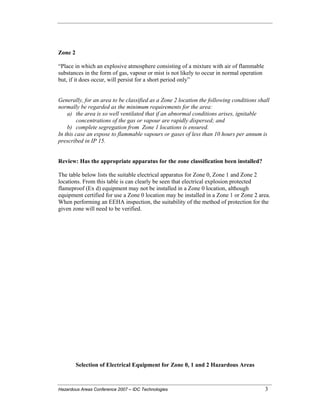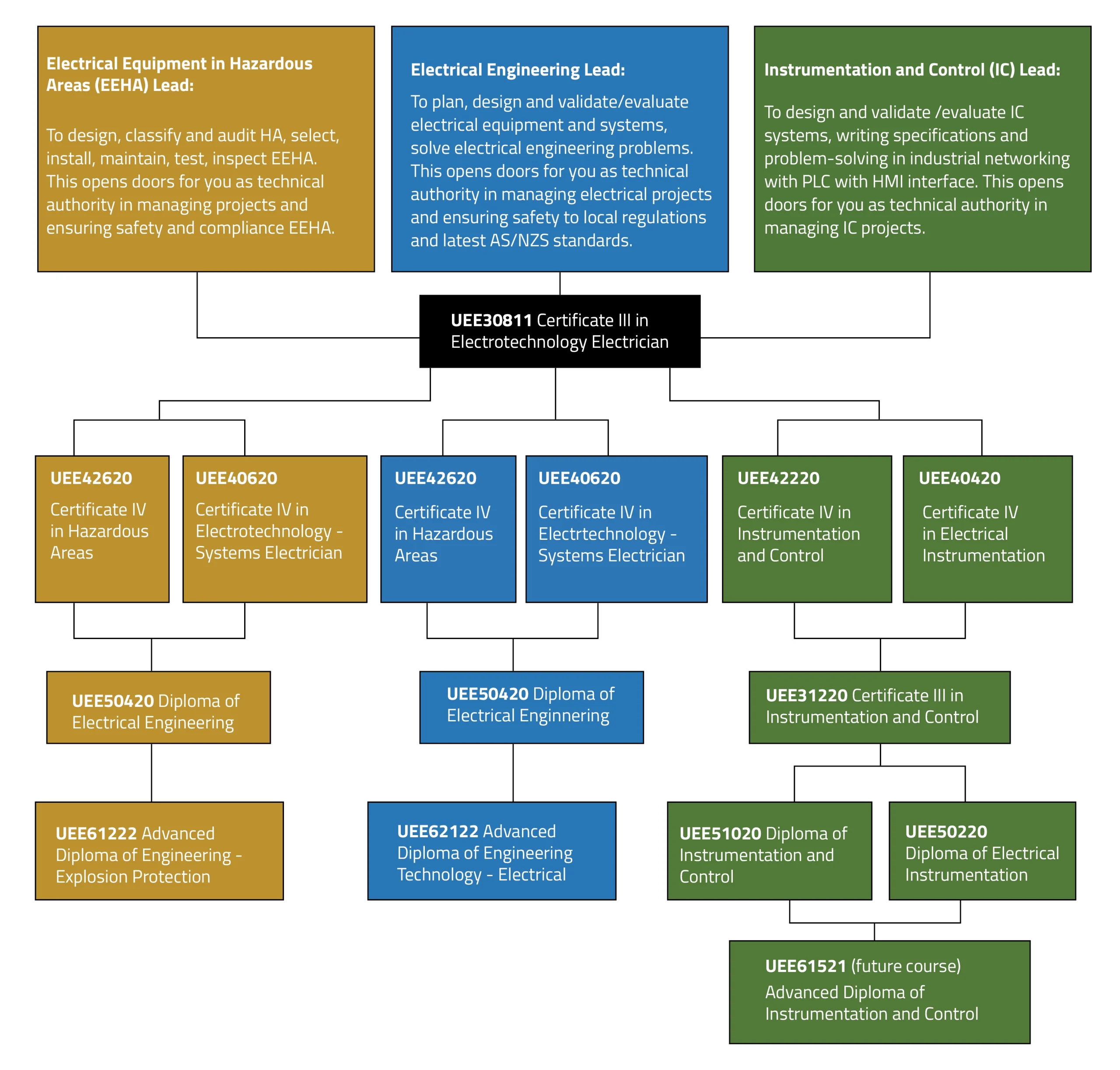Roar Solutions Fundamentals Explained
Roar Solutions Fundamentals Explained
Blog Article
Roar Solutions for Beginners
Table of ContentsA Biased View of Roar SolutionsUnknown Facts About Roar SolutionsThe Only Guide to Roar Solutions
In order to safeguard installations from a potential surge a method of analysing and classifying a potentially dangerous area is required. The function of this is to guarantee the right option and installation of equipment to eventually protect against an explosion and to guarantee safety and security of life.
(https://www.cheaperseeker.com/u/roarsolutions)
No equipment should be mounted where the surface temperature level of the devices is above the ignition temperature level of the given threat. Below are some common dirt harmful and their minimum ignition temperature level. Coal Dust 380C 225C Polythene 420C (thaws) Methyl Cellulose 420C 320C Starch 460C 435C Flour 490C 340C Sugar 490C 460C Grain Dust 510C 300C Phenolic Resin 530C > 450C Aluminium 590C > 450C PVC 700C > 450C Soot 810C 570C The likelihood of the threat being present in a focus high enough to create an ignition will vary from area to place.
In order to categorize this danger an installation is divided right into areas of threat depending upon the quantity of time the harmful is existing. These locations are described as Zones. For gases and vapours and dusts and fibres there are 3 zones. Area 0 Zone 20 A dangerous ambience is highly likely to be present and may exist for extended periods of time (> 1000 hours annually) or also continually Zone 1 Area 21 A hazardous atmosphere is possible yet not likely to be present for long periods of time (> 10 450 C [842 F] A category of T6 suggests the minimum ignition temperature level is > 85 C [185 F] Hazardous location electrical tools perhaps developed for use in greater ambient temperatures. This would certainly showed on the ranking plate e.g. EExe II C T3 Ta + 60C( This suggests at 60C ambient T3 will not be gone beyond) T1 T1, T2, T3, T4, T5, T6 T2 T2, T3, T4, T5, T6 T3 T3, T4, T5, T6 T4 T4, T5, T6 T5 T5, T6 T6 T6 A T Course score of T1 suggests the optimum surface area temperature level produced by the instrument at 40 C is 450 C. Presuming the associated T Course and Temperature level ranking for the devices are suitable for the area, you can always use a tool with a much more rigid Department score than needed for the location. There isn't a clear response to this question however. It truly does depend upon the kind of devices and what repair services need to be brought out. Devices with certain test procedures that can't be performed in the field in order to achieve/maintain third celebration rating. Must return to the manufacturing facility if it is before the devices's solution. Area Repair By Authorised Worker: Complex testing may not be required nevertheless certain procedures might require to be adhered to in order for the tools to keep its 3rd party rating. Authorised personnel need to be employed to do the job appropriately Fixing must be a like for like substitute. New part must be considered as a straight substitute needing no unique testing of the equipment after the fixing is complete. Each piece of tools with a dangerous ranking must be assessed separately. These are laid out at a high degree listed below, but also for even more thorough details, please refer straight to the standards.
9 Easy Facts About Roar Solutions Shown
The tools register is a detailed data source of devices documents that consists of a minimum set of areas to recognize each thing's area, technical parameters, Ex classification, age, and ecological information. This details is critical for tracking and taking care of the devices effectively within unsafe areas. In contrast, for periodic or RBI sampling examinations, the quality will be a combination of Thorough and Close examinations. The proportion of Thorough to Close evaluations will certainly be determined by the Equipment Threat, which is evaluated based upon ignition threat (the probability of a source of ignition versus the possibility of a flammable atmosphere )and the harmful area category
( Area 0, 1, or 2). This variant will also affect the resourcing needs for job preparation. As soon as Whole lots are specified, you can create sampling strategies based on the sample dimension of each Great deal, which describes the number of random tools products to be examined. To figure out the required sample size, 2 facets require to be browse around these guys examined: the size of the Lot and the category of examination, which indicates the degree of initiative that must be applied( decreased, typical, or enhanced )to the inspection of the Lot. By integrating the classification of assessment with the Lot dimension, you can then develop the proper being rejected requirements for a sample, meaning the allowable number of damaged products discovered within that sample. For even more information on this process, please describe the Power Institute Guidelines. The IEC 60079 conventional suggests that the maximum interval between evaluations must not surpass three years. EEHA examinations will likewise be performed beyond RBI projects as component of scheduled upkeep and tools overhauls or repairs. These evaluations can be credited towards the RBI sample sizes within the affected Lots. EEHA evaluations are performed to identify mistakes in electric devices. A weighted scoring system is crucial, as a solitary tool might have multiple mistakes, each with differing degrees of ignition threat. If the combined score of both evaluations is much less than two times the fault rating, the Lot is considered acceptable. If the Great deal is still thought about unacceptable, it needs to undertake a complete evaluation or reason, which may trigger stricter assessment methods. Accepted Whole lot: The root causes of any faults are determined. If a typical failing setting is found, additional devices might require assessment and repair service. Faults are classified by intensity( Safety, Integrity, House cleaning ), making sure that immediate concerns are analyzed and attended to quickly to minimize any type of effect on safety and security or procedures. The EEHA data source should track and videotape the lifecycle of faults in addition to the corrective actions taken. Applying a robust Risk-Based Assessment( RBI )method is critical for ensuring conformity and safety in handling Electric Tools in Hazardous Locations( EEHA) (eeha training). Automated Fault Rating and Lifecycle Monitoring: Easily manage mistakes and track their lifecycle to boost evaluation accuracy. The intro of this support for risk-based assessment additionally reinforces Inspectivity's setting as a best-in-class solution for regulatory conformity, in addition to for any asset-centric evaluation usage situation. If you want finding out a lot more, we welcome you to request a presentation and find just how our option can transform your EEHA administration procedures.
Roar Solutions Things To Know Before You Get This

In regards to eruptive threat, a dangerous area is an atmosphere in which an explosive ambience is existing (or may be expected to be existing) in quantities that need special safety measures for the building, setup and usage of equipment. eeha courses. In this write-up we discover the challenges faced in the office, the risk control procedures, and the called for competencies to work securely
These compounds can, in particular problems, create explosive atmospheres and these can have major and unfortunate effects. Many of us are acquainted with the fire triangle get rid of any one of the 3 aspects and the fire can not take place, yet what does this mean in the context of harmful locations?
In the majority of instances, we can do little regarding the degrees of oxygen in the air, yet we can have considerable impact on sources of ignition, as an example electric tools. Dangerous locations are recorded on the harmful location classification illustration and are identified on-site by the triangular "EX" sign. Below, amongst other key information, zones are split into three kinds relying on the hazard, the possibility and period that an eruptive atmosphere will exist; Area 0 or 20 is considered one of the most harmful and Zone 2 or 22 is deemed the least.
Report this page